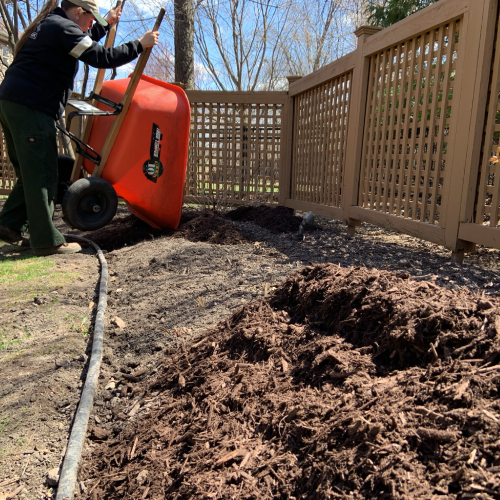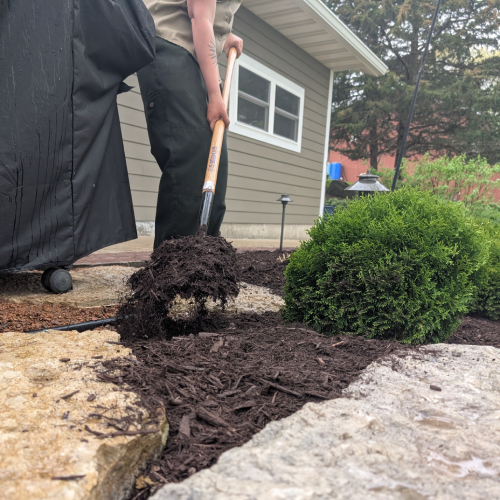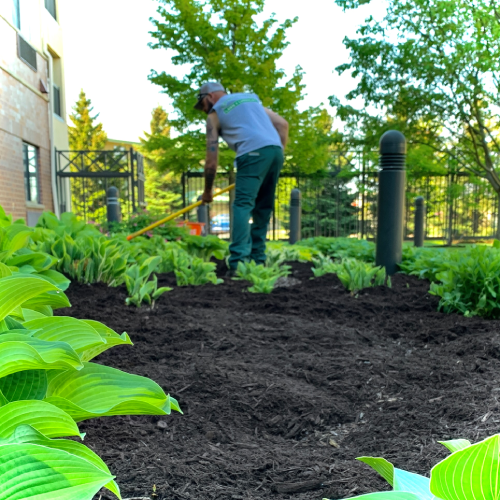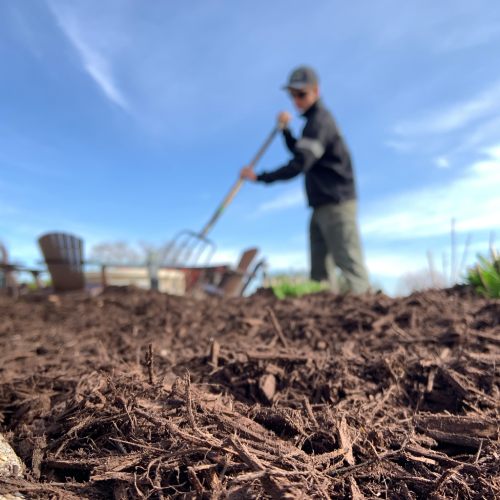
Should You Use Landscape Fabric Under Mulch? Here’s Why We Say No.
Should You Use Landscape Fabric Under Mulch? Here’s What We’ve Seen Go Wrong.
Landscape fabric under mulch may seem like a smart weed-control solution, but it often causes more harm than good. Over time, it blocks water and nutrients, damages roots, and traps decomposed mulch—leading to more weeds. Instead, rely on natural mulch, proper depth, and routine care.
Why People Use Landscape Fabric Under Mulch (And Why It Fails)
If you’re tired of pulling weeds or looking for a way to make your mulch beds easier to maintain, landscape fabric probably caught your attention. It’s often recommended at garden centers and in DIY blogs as a long-term fix for weed control, moisture retention, and low-maintenance landscaping.
At Carrington Lawn & Landscape, we understand why it sounds appealing—but what seems like a smart solution doesn’t always hold up in the real world. Especially in Wisconsin’s clay-heavy soils, the results often fall short of expectations.
What Is Landscape Fabric and Why Do People Use It?
Landscape fabric is a synthetic material—typically made from woven or nonwoven plastic—that’s laid under mulch or stone to block weeds. It promises to stop weed growth by cutting off sunlight and conserving soil moisture.
For DIYers and first-time homeowners, it can seem like a simple, low-effort solution. But while it may offer short-term benefits, the long-term downsides often make it more of a hassle than a help.
Is It Bad to Use Landscape Fabric Under Mulch?
Yes, and here’s why. While it might seem like a shortcut, landscape fabric under mulch ends up doing more harm than good in the long run.
Real Problems We See with Landscape Fabric in Madison, WI
From what we’ve seen in the field, here’s where landscape fabric tends to fall short:
- It blocks soil life. Water, oxygen, and nutrients struggle to reach your plant roots.
- Roots get tangled or trapped. As plants grow, their roots may weave into the fabric—leading to stress and poor development.
- Weeds still happen. As mulch decomposes, it creates a new organic layer on top of the fabric, where weeds can still take root.
- It’s messy to remove. Over time, fabric becomes buried under soil and roots, making removal frustrating and labor-intensive.
- Soil quality declines. Healthy soil relies on organic matter and microbes. With fabric in the way, that ecosystem breaks down.
So if you’re wondering, “Does landscape fabric work?”—the answer is: only temporarily, and at a long-term cost to your soil health.
What to Use Under Mulch Instead (Our Expert Picks)
At Carrington Lawn & Landscape, we recommend more sustainable, soil-friendly mulch practices. The right materials and techniques can offer lasting weed control—without the drawbacks of synthetic barriers.
Mulch alternatives and best practices:
- Organic mulch (like shredded bark, hardwood chips, or composted mulch) enriches soil as it breaks down.
- Cardboard or newspaper layers can help block weeds short-term and decompose naturally over time.
- Maintain 2–4 inches of mulch to smother weeds while still allowing airflow and moisture retention.
- Weed as needed—a quick seasonal cleanup is far easier than fabric removal.
Pro Tip: Weed prevention starts with healthy soil. Focus on building rich, loamy beds instead of covering them up.
FAQs About Landscape Fabric Under Mulch
What are the pros and cons of landscape fabric?
It offers short-term weed control and moisture retention but blocks water and nutrients, traps roots, and creates new weed layers as mulch breaks down. Long-term, it harms soil health and is difficult to remove.
Does landscape fabric stop weeds permanently?
No. Weeds often grow in the mulch or debris that accumulates above the fabric.
Can I use cardboard or newspaper instead of landscape fabric?
Yes. These biodegradable options allow nutrients to pass through while suppressing weeds in the short term.
How thick should mulch be to prevent weeds?
Aim for 2–4 inches of mulch. Too little won’t block weeds, and too much can suffocate roots.
Is landscape fabric ever a good idea?
Possibly under gravel or stone—where you don’t want soil contact or root growth. But in mulch beds with living plants? We recommend skipping it.
Final Verdict—Skip the Fabric, Save the Soil
Bottom Line: Landscape fabric might seem smart, but it causes more problems than it solves. Bare soil + quality mulch = a healthier, weed-resistant yard.
Want mulch that really works? Trust Carrington Lawn & Landscape for expert mulch installation and weed control in Madison, Middleton, and surrounding areas.
Contact us today to schedule a consultation—we’ll help your landscape thrive the right way.
